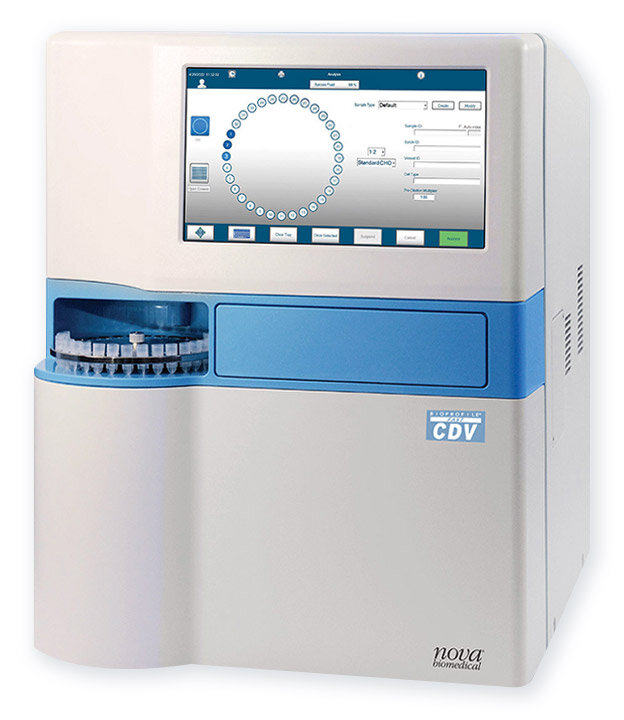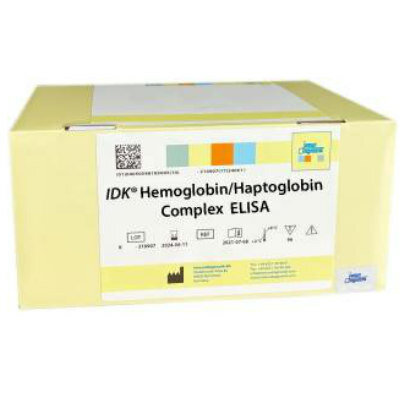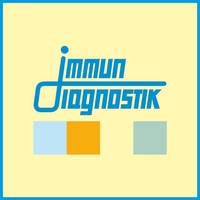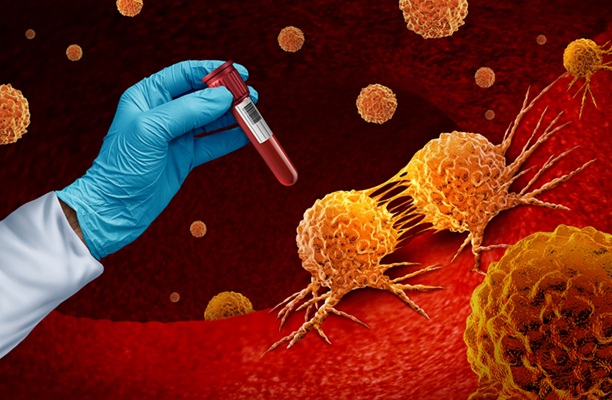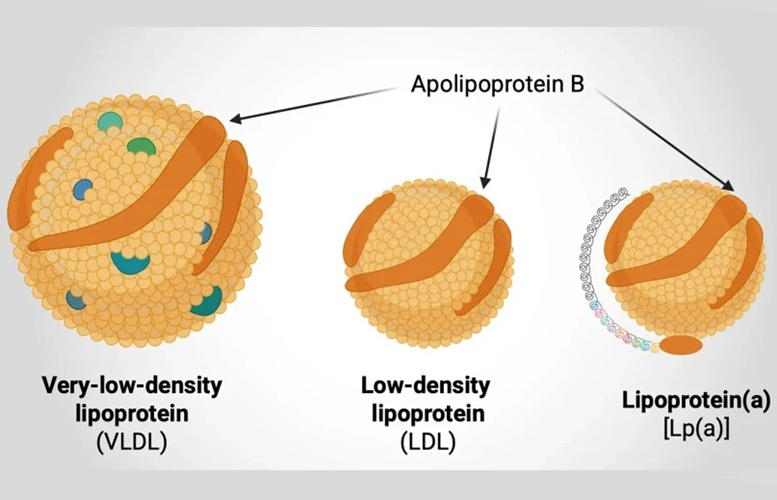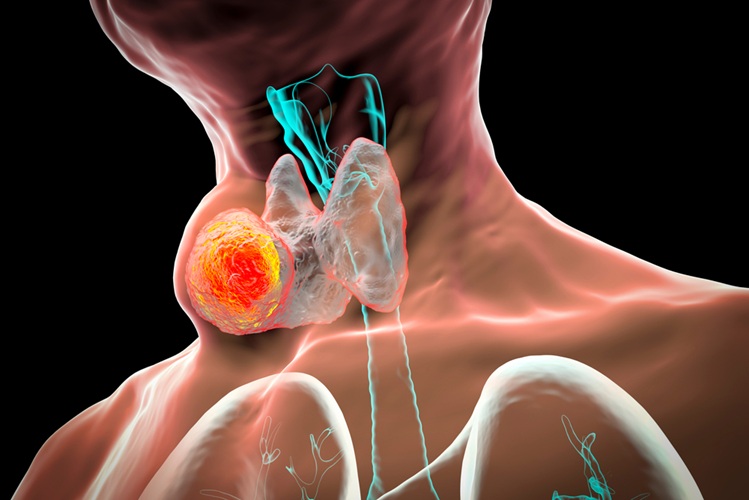Natural Antibodies Can Prevent Adverse Immune Reactions
|
By LabMedica International staff writers Posted on 11 Mar 2019 |
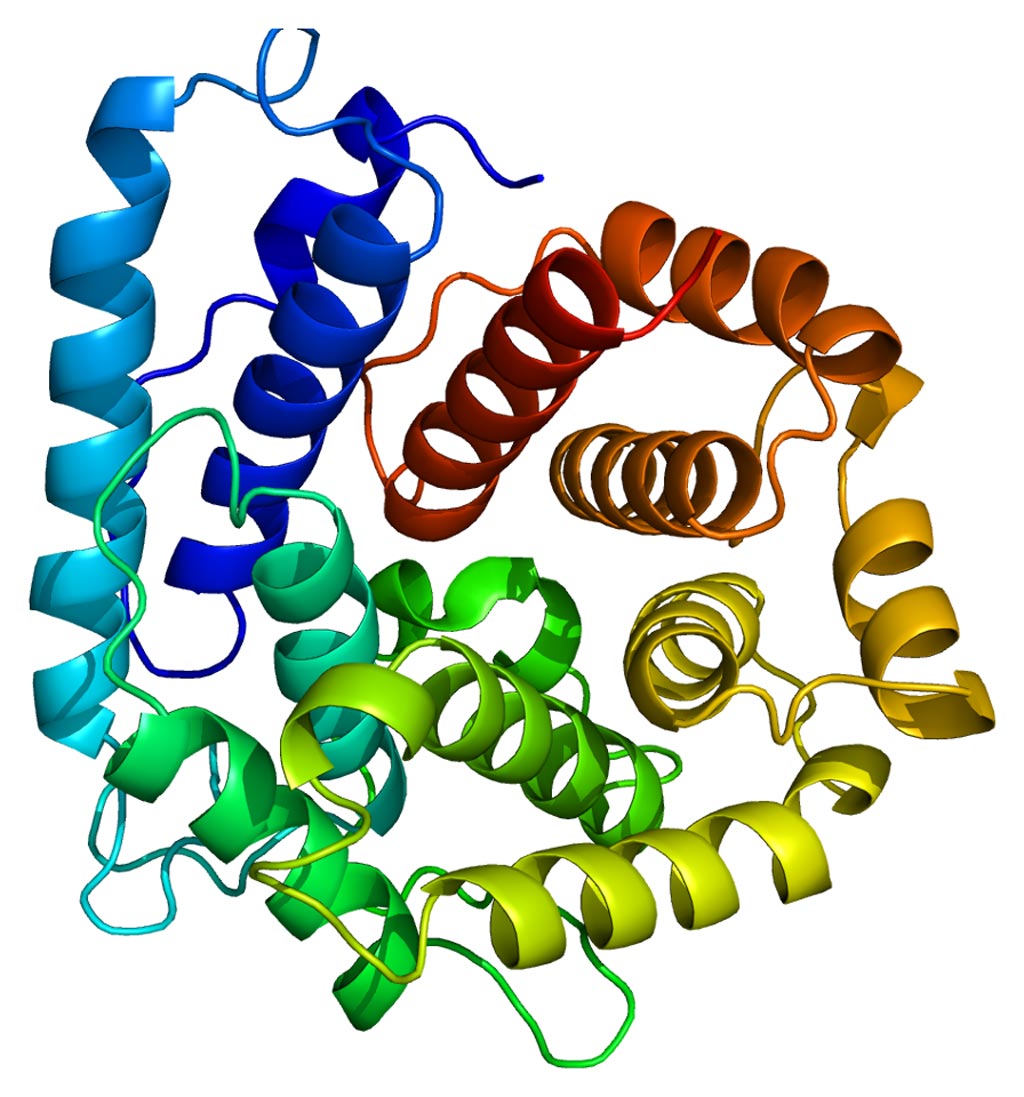
Image: The structure of the third complement (C3) protein (Photo courtesy of Wikipedia).
Natural antibodies, in particular IgG, have been shown to be a critical factor that determines the efficiency of complement activation in different subjects and by different nanomaterials.
Deposition of complement factors (opsonization) on nanoparticles may promote clearance from the blood by macrophages and trigger pro-inflammatory responses, but the mechanisms regulating the efficiency of complement activation are poorly understood.
Opsonization is the molecular mechanism whereby molecules, microbes, or apoptotic cells are chemically modified to have stronger interactions with cell surface receptors on phagocytes and natural killer (NK cells). With the antigen coated in opsonins, binding to immune cells is greatly enhanced. Opsonization also mediates phagocytosis via signal cascades from cell surface receptors. Opsonins aid the immune system in a number of ways: in a healthy individual, they mark dead and dying self-cells for clearance by macrophages and neutrophils, activate complement proteins, and target cells for destruction through the action of NK cells.
Investigators at the University of Colorado (Aurora, CO, USA) previously found that opsonization of superparamagnetic iron oxide (SPIO) nanoworms with the third complement protein (C3) was dependent on the biomolecule corona of the nanoparticles. C3 is a molecule that plays a central role in the activation of the complement system, and its activation is required for both classical and alternative complement activation pathways. People with C3 deficiency are susceptible to bacterial infection.
In a paper published in the January 14, 2019, online edition of the journal Nature Nanotechnology, the investigators reported that binding of only a few immunoglobulin molecules, and specifically IgG, determined the efficiency of C3 deposition on nanomaterials introduced into the plasma and sera of healthy donors and in plasma of cancer patients, regardless of the complement activation pathway. Moreover, the presence of the biomolecule corona enhanced IgG binding to all tested nanomaterials.
“In all of the nanoparticles that we tested, complement activation was dependent on the binding of certain of these natural antibodies to nanoparticles,” said senior author Dr. Dmitri Simberg, associate professor of pharmaceutical sciences at the University of Colorado. “Interestingly, the antibodies bind to the proteins in the corona, rather than to the pristine nanoparticle surface itself. If a person has a high level of antibodies that can recognize a particular type of nanoparticle, this person will have high complement activation. The study gave us an exciting new angle on how the system recognizes nanomaterials. This knowledge step is important for designing a better coating so the particles can be more biocompatible and safer. I am a really big fan and proponent of mechanistic studies in the nanodrug delivery field that can guide us to better designs.”
Related Links:
University of Colorado
Deposition of complement factors (opsonization) on nanoparticles may promote clearance from the blood by macrophages and trigger pro-inflammatory responses, but the mechanisms regulating the efficiency of complement activation are poorly understood.
Opsonization is the molecular mechanism whereby molecules, microbes, or apoptotic cells are chemically modified to have stronger interactions with cell surface receptors on phagocytes and natural killer (NK cells). With the antigen coated in opsonins, binding to immune cells is greatly enhanced. Opsonization also mediates phagocytosis via signal cascades from cell surface receptors. Opsonins aid the immune system in a number of ways: in a healthy individual, they mark dead and dying self-cells for clearance by macrophages and neutrophils, activate complement proteins, and target cells for destruction through the action of NK cells.
Investigators at the University of Colorado (Aurora, CO, USA) previously found that opsonization of superparamagnetic iron oxide (SPIO) nanoworms with the third complement protein (C3) was dependent on the biomolecule corona of the nanoparticles. C3 is a molecule that plays a central role in the activation of the complement system, and its activation is required for both classical and alternative complement activation pathways. People with C3 deficiency are susceptible to bacterial infection.
In a paper published in the January 14, 2019, online edition of the journal Nature Nanotechnology, the investigators reported that binding of only a few immunoglobulin molecules, and specifically IgG, determined the efficiency of C3 deposition on nanomaterials introduced into the plasma and sera of healthy donors and in plasma of cancer patients, regardless of the complement activation pathway. Moreover, the presence of the biomolecule corona enhanced IgG binding to all tested nanomaterials.
“In all of the nanoparticles that we tested, complement activation was dependent on the binding of certain of these natural antibodies to nanoparticles,” said senior author Dr. Dmitri Simberg, associate professor of pharmaceutical sciences at the University of Colorado. “Interestingly, the antibodies bind to the proteins in the corona, rather than to the pristine nanoparticle surface itself. If a person has a high level of antibodies that can recognize a particular type of nanoparticle, this person will have high complement activation. The study gave us an exciting new angle on how the system recognizes nanomaterials. This knowledge step is important for designing a better coating so the particles can be more biocompatible and safer. I am a really big fan and proponent of mechanistic studies in the nanodrug delivery field that can guide us to better designs.”
Related Links:
University of Colorado
Latest BioResearch News
- Genome Analysis Predicts Likelihood of Neurodisability in Oxygen-Deprived Newborns
- Gene Panel Predicts Disease Progession for Patients with B-cell Lymphoma
- New Method Simplifies Preparation of Tumor Genomic DNA Libraries
- New Tool Developed for Diagnosis of Chronic HBV Infection
- Panel of Genetic Loci Accurately Predicts Risk of Developing Gout
- Disrupted TGFB Signaling Linked to Increased Cancer-Related Bacteria
- Gene Fusion Protein Proposed as Prostate Cancer Biomarker
- NIV Test to Diagnose and Monitor Vascular Complications in Diabetes
- Semen Exosome MicroRNA Proves Biomarker for Prostate Cancer
- Genetic Loci Link Plasma Lipid Levels to CVD Risk
- Newly Identified Gene Network Aids in Early Diagnosis of Autism Spectrum Disorder
- Link Confirmed between Living in Poverty and Developing Diseases
- Genomic Study Identifies Kidney Disease Loci in Type I Diabetes Patients
- Liquid Biopsy More Effective for Analyzing Tumor Drug Resistance Mutations
- New Liquid Biopsy Assay Reveals Host-Pathogen Interactions
- Method Developed for Enriching Trophoblast Population in Samples
Channels
Clinical Chemistry
view channel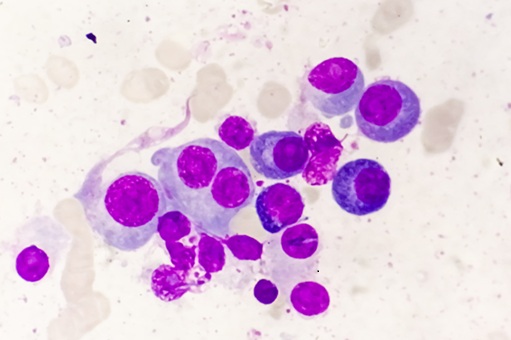
Mass Spectrometry-Based Monitoring Technique to Predict and Identify Early Myeloma Relapse
Myeloma, a type of cancer that affects the bone marrow, is currently incurable, though many patients can live for over 10 years after diagnosis. However, around 1 in 5 individuals with myeloma have a high-risk... Read more
‘Brilliantly Luminous’ Nanoscale Chemical Tool to Improve Disease Detection
Thousands of commercially available glowing molecules known as fluorophores are commonly used in medical imaging, disease detection, biomarker tagging, and chemical analysis. They are also integral in... Read more
Low-Cost Portable Screening Test to Transform Kidney Disease Detection
Millions of individuals suffer from kidney disease, which often remains undiagnosed until it has reached a critical stage. This silent epidemic not only diminishes the quality of life for those affected... Read more
New Method Uses Pulsed Infrared Light to Find Cancer's 'Fingerprints' In Blood Plasma
Cancer diagnoses have traditionally relied on invasive or time-consuming procedures like tissue biopsies. Now, new research published in ACS Central Science introduces a method that utilizes pulsed infrared... Read moreMolecular Diagnostics
view channel
New Genetic Tool Analyzes Umbilical Cord Blood to Predict Future Disease
Children are experiencing metabolic problems at increasingly younger ages, placing them at higher risk for serious health issues later in life. There is a growing need to identify this risk from birth... Read more
Spinal Fluid Biomarker for Parkinson’s Disease Offers Early and Accurate Diagnosis
Parkinson’s disease is a neurodegenerative condition typically diagnosed at an advanced stage based on clinical symptoms, primarily motor disorders. However, by this time, the brain has already undergone... Read moreHematology
view channel
New Scoring System Predicts Risk of Developing Cancer from Common Blood Disorder
Clonal cytopenia of undetermined significance (CCUS) is a blood disorder commonly found in older adults, characterized by mutations in blood cells and a low blood count, but without any obvious cause or... Read more
Non-Invasive Prenatal Test for Fetal RhD Status Demonstrates 100% Accuracy
In the United States, approximately 15% of pregnant individuals are RhD-negative. However, in about 40% of these cases, the fetus is also RhD-negative, making the administration of RhoGAM unnecessary.... Read moreImmunology
view channel
Stem Cell Test Predicts Treatment Outcome for Patients with Platinum-Resistant Ovarian Cancer
Epithelial ovarian cancer frequently responds to chemotherapy initially, but eventually, the tumor develops resistance to the therapy, leading to regrowth. This resistance is partially due to the activation... Read more
Machine Learning-Enabled Blood Test Predicts Immunotherapy Response in Lymphoma Patients
Chimeric antigen receptor (CAR) T-cell therapy has emerged as one of the most promising recent developments in the treatment of blood cancers. However, over half of non-Hodgkin lymphoma (NHL) patients... Read moreMicrobiology
view channel
New Test Diagnoses Bacterial Meningitis Quickly and Accurately
Bacterial meningitis is a potentially fatal condition, with one in six patients dying and half of the survivors experiencing lasting symptoms. Therefore, rapid diagnosis and treatment are critical.... Read more
Handheld Device Delivers Low-Cost TB Results in Less Than One Hour
Tuberculosis (TB) remains the deadliest infectious disease globally, affecting an estimated 10 million people annually. In 2021, about 4.2 million TB cases went undiagnosed or unreported, mainly due to... Read more
New AI-Based Method Improves Diagnosis of Drug-Resistant Infections
Drug-resistant infections, particularly those caused by deadly bacteria like tuberculosis and staphylococcus, are rapidly emerging as a global health emergency. These infections are more difficult to treat,... Read more
Breakthrough Diagnostic Technology Identifies Bacterial Infections with Almost 100% Accuracy within Three Hours
Rapid and precise identification of pathogenic microbes in patient samples is essential for the effective treatment of acute infectious diseases, such as sepsis. The fluorescence in situ hybridization... Read morePathology
view channel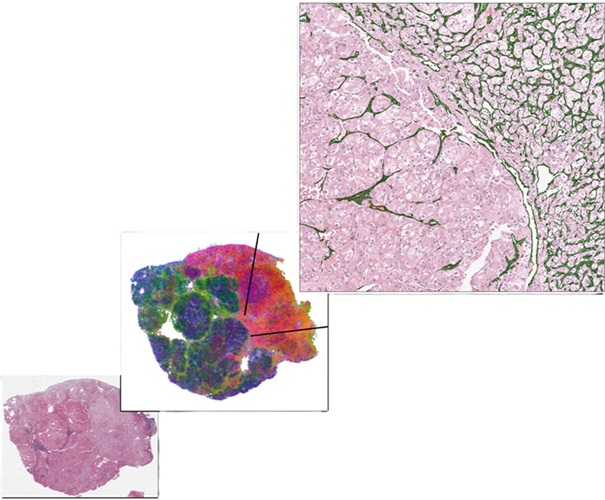
AI-Based Model Predicts Kidney Cancer Therapy Response
Each year, nearly 435,000 individuals are diagnosed with clear cell renal cell carcinoma (ccRCC), making it the most prevalent subtype of kidney cancer. When the disease spreads, anti-angiogenic therapies... Read more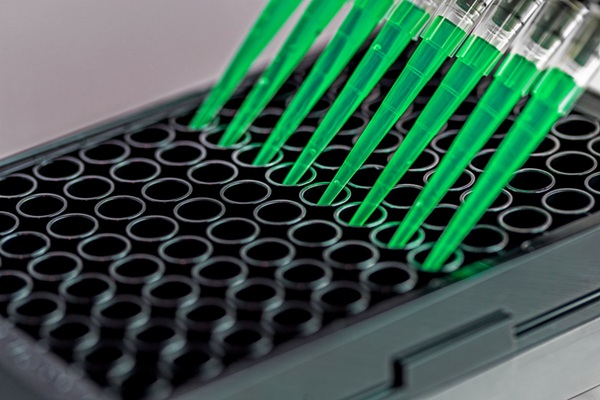
Sensitive and Specific DUB Enzyme Assay Kits Require Minimal Setup Without Substrate Preparation
Ubiquitination and deubiquitination are two important physiological processes in the ubiquitin-proteasome system, responsible for protein degradation in cells. Deubiquitinating (DUB) enzymes contain around... Read moreTechnology
view channel
Disposable Microchip Technology Could Selectively Detect HIV in Whole Blood Samples
As of the end of 2023, approximately 40 million people globally were living with HIV, and around 630,000 individuals died from AIDS-related illnesses that same year. Despite a substantial decline in deaths... Read more
Pain-On-A-Chip Microfluidic Device Determines Types of Chronic Pain from Blood Samples
Chronic pain is a widespread condition that remains difficult to manage, and existing clinical methods for its treatment rely largely on self-reporting, which can be subjective and especially problematic... Read more
Innovative, Label-Free Ratiometric Fluorosensor Enables More Sensitive Viral RNA Detection
Viruses present a major global health risk, as demonstrated by recent pandemics, making early detection and identification essential for preventing new outbreaks. While traditional detection methods are... Read moreIndustry
view channel
Cepheid and Oxford Nanopore Technologies Partner on Advancing Automated Sequencing-Based Solutions
Cepheid (Sunnyvale, CA, USA), a leading molecular diagnostics company, and Oxford Nanopore Technologies (Oxford, UK), the company behind a new generation of sequencing-based molecular analysis technologies,... Read more
Grifols and Tecan’s IBL Collaborate on Advanced Biomarker Panels
Grifols (Barcelona, Spain), one of the world’s leading producers of plasma-derived medicines and innovative diagnostic solutions, is expanding its offer in clinical diagnostics through a strategic partnership... Read more




